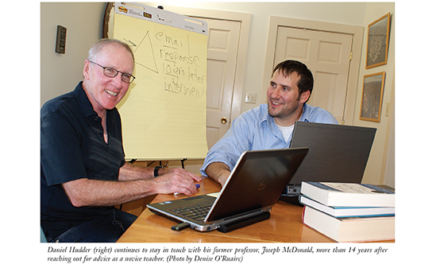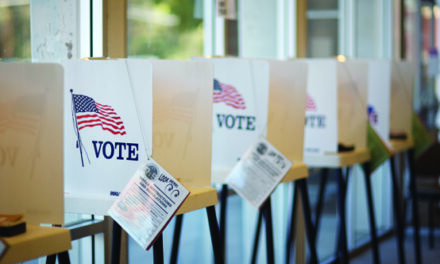The founders of the nation’s public school system aimed to provide all students with a liberal education, but in recent decades, reformers have all but forgotten that mission.
In his classic Anti-intellectualism in American Life (1963), the historian Richard Hofstadter argued that popular suspicions of and hostility toward intellectuals grew out of the laudable egalitarian commitments of Protestantism and the American Revolution. Favoring a religion of the heart and the common sense of the people, Americans tended to distrust what they saw as the inaccessible musings of philosophers and university professors. A pragmatic people, they treated ideas as tools to achieve their goals, not as ends in themselves.
Further, Hofstadter argued, because intellectuals viewed the exchange of ideas as intrinsically worthwhile, without regard for economic interests, business leaders, too, were often hostile to the life of the mind. To them, knowledge mattered not for its own sake, but for its cash value.
More surprising, perhaps, was Hofstadter’s antagonism toward university-based schools of education. During the first half of the 20th century, he argued, education scholars had come to view the teaching of academic subject matter as secondary to the goal of providing young people with basic instruction in life skills. He worried that as “the mental world of the professional educationist became separated from that of the academic scholar,” the purposes of schooling would become more utilitarian and less intellectual (Hofstadter 1963, p. 338).
It is a strange and sobering experience to read Hofstadter in our own anti-intellectual era. His midcentury observations, written in the wake of McCarthyism, seem prescient and help make sense of the anti-intellectualism of today’s education rhetoric and policy making. Now as then, many business leaders, education professors, and ordinary Americans take a purely instrumental view of the K-12 curriculum, treating the study of academic subject matter as just a means to an end.
Yet, while Anti-intellectualism in American Life has often been read as a defense of beleaguered intellectuals, Hofstadter argued that intellectuals themselves were partly to blame for their sorry state. In the early 1960s, he could see that many academics, writers, and artists were becoming increasingly disdainful of the wider public. At a time when our government was expanding rapidly and citizens were becoming distant from the officials and experts who shaped their lives, intellectuals were retreating still further from their fellow Americans.
“Dissenting intellectuals often seem to feel that they are morally on trial for being intellectuals,” Hofstadter noted, and they often respond by repudiating and railing against the common wisdom, rather than contributing to it. Thus, the intellectual “prophets of alienation” act in ways that further their own marginalization, he concluded (Hofstadter, 1963, p. 419). In the case of education reform since the 1990s, he may well have been correct.
Liberal education for all?
America’s first public schools were local institutions, often housed in small unpainted buildings, but they provided the foundation on which antebellum school reformers such as Horace Mann, from Massachusetts, sought to build larger school systems. Mann and other early advocates for public education have not always been treated well by historians, however. To conservatives, they were guilty of imposing an industrial-bureaucratic system that prized uniformity and expert control. And to critics on the left, they were responsible for the creation of factory-like schools that aimed to transform diverse Americans into obedient, productive workers.
These criticisms are largely incorrect, though. By and large, the early advocates for public schooling argued that learning the arts and sciences would empower young people by giving them the knowledge and critical-thinking skills necessary for effective citizenship. Moreover, they aspired to create schools that would develop young Americans’ innate capabilities — what was then called “self-culture.” In public schools, Mann wrote in 1848, “embryos of talent may be quickened” not just to “solve the difficult problems of political and economical law” but also to kindle “the genius which will blaze forth in the poets of humanity.”
Both citizenship and self-culture depended on a content-rich curriculum in the arts and sciences. As one reformer of the era wrote, reading “history, poetry, criticism, essays, novels, stories, biographies, [and] travels,” gave students insight into the world. Common school advocate and politician Henry Barnard believed that “every school house should be a temple, consecrated in prayer to the physical, intellectual, and moral culture of every child in the community.” Studying science was not for job training, as in our STEM-obsessed era, but for enlightenment. In the words of one 1848 writer, “there is not a star or a stone which is not placed before us as a volume to be opened and read” (as cited in Neem, 2017, pp. 55-57, 95).
Content was not enough, of course. Mann and his generation are rightly remembered for establishing the nation’s first normal schools for preparing teachers. They advocated higher salaries to reflect teachers’ expertise. They sought to improve both the curriculum and how it was delivered (Fraser, 2007; Ogren, 2005).
However, efforts to democratize access to the arts and sciences didn’t reach their high point until the 1894 Report of the Committee on Secondary School Studies, known as the Committee of Ten. Organized by the National Council of Education, a unit of the National Educational Association (NEA), the committee was charged with providing guidance on the subjects high school students should study. The committee consisted of some of America’s most prominent education figures, including Harvard’s president Charles Eliot and U.S. Commissioner of Education William Torrey Harris, and subject-area subcommittees of professors, school administrators, and teachers.
Although the committee’s report proposed different tracks for students with different goals, the similarities between the tracks mattered more than their differences. That’s because the committee believed every child deserved an academic education and that each track should prepare students for postsecondary work. Anticipating critics who might wonder why students who had no interest in college should devote so much time to academics, the report noted that committee members overwhelmingly agreed that subjects should not be “treated differently for pupils who are going to college, for those who are going to a scientific [technical] school, and for those who, presumably, are going to neither.” Rather, equality demanded that “every subject which is taught . . . should be taught in the same way and to the same extent to every pupil so long as he pursues it, no matter what the probable destination of the pupil may be” (Sizer, 1964, pp. 226-27).
That is, 19th-century reformers from Mann through the Committee of Ten aspired to give each student a meaningful opportunity to explore the human and natural worlds. In a democracy, they believed, everyone deserved and needed a liberal education.
The Progressive retreat from academic content
During the Progressive Era, a new generation of self-styled education experts challenged the assumptions that had guided the Committee of Ten. According to the authors of the influential 1918 report Cardinal Principles of Secondary Education, public education’s goal was not primarily intellectual. Therefore, influence over the curriculum should not rest in the hands of academic scholars, but in the hands of a new class of education experts. Moreover, they argued, the appropriate credential for teachers and principals was not an academic degree but an education degree; they ought to study pedagogy and administration, not subjects like history and chemistry.
And for students, they believed, subjects like history and chemistry were valuable only to the extent that they prepared them for work, citizenship, or social adjustment. Beyond those purposes, academic studies were ill-suited and irrelevant for most children, especially those not bound for college. In short, while 19th-century reformers sought to increase access to a liberal arts curriculum, early-20th-century Progressives rebranded that goal as intellectual elitism, fit for a bygone era (Ravitch, 2000, pp. 51-129).
If anything, left-leaning intellectuals’ sense of alienation has increased since the 1990s.
Of course, anti-intellectualism was not confined to education experts. For example, many Americans resisted the teaching of science in the schools, particularly evolution, on the grounds that it would undermine Biblical authority. To Hofstadter, this was particularly alarming. If the public at large questioned “the value of developing the mind for intellectual or imaginative achievement” (p. 309), then who would put the brakes on the “influential anti-intellectualist movement” (p. 323) emerging within the field of education?
As high school enrollments continued to grow, it was inevitable that the curriculum would evolve, Hofstadter admitted. The question was whether “the academic content and intellectual standards of the school should be made as high as possible for each child, according to his will and his capacities, or whether there was good ground for abandoning any such end” (p. 328). To Hofstadter, education experts in the first half of the 20th century had simply gone ahead and abandoned intellectual ends for most students, in favor of a focus on “life adjustment.”
Life adjustment advocates sought to prepare students for their social functions through a more flexible and relevant, and less purely academic, curriculum. Schools introduced subjects such as driver’s education, for example, and placed a greater emphasis on social development and peer relations. It was not a rejection of expertise, but a shift in control. Designed by curriculum experts instead of professors in the arts and sciences, life adjustment emerged at a time when American leaders, worried about the spread of totalitarianism, wanted to ensure that Americans would not be ripe for manipulation. Well-adjusted children, it was thought, would be immune. Thus, as Thomas Fallace (2018) writes, “the social studies curriculum in many schools became more of a process than a body of knowledge, and more of a list of narrowly conceived, observable behaviors than a path toward intellectual development” (pp. 110-114).
“Traditional education,” Hofstadter observed, “had been founded . . . on the assumption that the child, through some degree of mastery of academic subjects, would enlarge his mind” (p. 355). In contrast, many education experts did not appear to believe that most students could — or should seek to — achieve high academic standards. In practice, this meant that affluent students, who were presumably college-bound, would continue to pursue a liberal education, while poorer and minority students would get less in the way of intellectual content.
An academic revival?
Hofstadter was on the left, but conservatives picked up his critique, especially after the Soviets’ successful launch of Sputnik, in 1957, led to widespread concerns about America’s international competitiveness. Anxieties were heightened still further following the 1983 publication of A Nation at Risk, with its famous warning of a “rising tide of mediocrity.” Progressive reforms had hurt American children, skeptics concluded, by replacing demanding subject matter with superficial coursework and by emphasizing skills development over the mastery of literature, math, science, and history.
Eventually, since the call for a richer and more intellectual curriculum came from both sides of the political spectrum, Republicans and Democrats were able to join forces to challenge the Progressive inheritance through the establishment of national subject-area standards. In 1991, with support from President George H.W. Bush, Congress established the National Council on Education Standards and Testing (NCEST), which, in turn, determined that national K-12 curriculum standards and assessments were necessary to improve schools and ensure equality.
In its 1992 report, NCEST argued that “In the absence of common, well specified, demanding content standards and high expectations for our students, our Nation has gravitated toward a de facto national minimum competency curriculum.” However, the report continued, no child should be denied the opportunity to learn demanding subject matter. Educational equality, the preparation of citizens, and economic competitiveness depend on providing all Americans with access to rigorous instruction in the liberal arts and sciences. Whatever one might think about national standards, it is worth noting just how consistent this argument was with the aims of the Committee of Ten and with the intellectual mission of public education that Hofstadter espoused.
Intellectual self-sabotage
And then it fell apart. While the Committee of Ten, in 1894, had shared many assumptions about what an academic curriculum should include, American intellectuals and policy makers in the 1990s were deeply divided over the content that should be taught in history, English, and other subject areas. Thus, the standards quickly became embroiled in America’s culture wars (Hartman, 2015; Zimmerman, 2002).
Initially, the Bush administration turned to professors in the arts and sciences to define the standards. This made sense — they wanted subject-area standards, so they sought input from disciplinary experts. For instance, the National Endowment for the Humanities (NEH), chaired by Lynne Cheney, and the U.S. Department of Education, under Lamar Alexander, assigned the UCLA-based National Center for History in the Schools (NCHS) to develop history standards.
In 1994, NCHS’s National History Task Force, cochaired by education professor Charlotte Crabtree and history professor Gary Nash, released its proposed standards, which emphasized “both the nation’s diversity exemplified by race, ethnicity, social and economic status, gender, region, politics, and religion, and our nation’s commonalities” (p. 3). However, many conservatives saw in the standards a left-wing interpretation of history. Cheney (1994), who remained at the NEH’s helm until the election of President Bill Clinton, condemned the standards as “politically correct.”
In response, Nash and his colleagues argued that the standards reflected recent scholarship and rightly pointed out that, in a democracy, it is a matter of both truth and justice to tell all Americans’ stories. Reading the standards today, it is difficult to conclude that they were as resistant to traditional history as Cheney asserted. For example, while George Washington might not have been mentioned as much as Cheney would have liked, the standards about the American Revolution and the formation of the federal government could not be met unless students learned about him. Indeed, much of the criticism focused not on the standards themselves but on the teaching examples that were attached to them — those examples were removed from a revised 1996 edition (Nash et al., 1997, pp. 248-258).
Yet, if Cheney distorted, so did Crabtree and Nash, who joined with historian Ross Dunn to defend the standards in their 1997 book History on Trial: Culture Wars and the Teaching of the American Past. No doubt, the authors were frustrated that their hard work was undermined by culture warriors. In their response, however, they engaged in what Hofstadter (1967), in a different book, called “the paranoid style.” That is, rather than consider why or how the standards might appear slanted, they looked for conspiracies and enemies, dismissed critics as fearful, and blamed a cabalistic alliance, led by Cheney and Newt Gingrich, for launching a “crusade” against left-leaning intellectuals. They argued that Cheney’s about-face on the standards didn’t reflect genuine concern but a desire by Republicans to “dismantle” the NEH and the Department of Education (Nash et al., 1997, pp. 213-215).
In History on Trial, one gets no sense that conservatives might have had legitimate questions about the costs of a more fragmented national story. Nash and his coauthors did not meaningfully engage with their critics’ expectation that public-school history instruction should nurture civil religion (Gorski, 2017), nor did they meaningfully address the very real challenges of balancing academic historians’ commitment to new knowledge that holds the present accountable for the past with a society’s need for a common story (Joyce, 2015; Lepore, 2018, 2019). Instead, they depicted themselves as victims of a “right-wing assault” (p. 188) and “smear campaign” (p. 224). As Diane Ravitch (2010) commented, “Unfortunately, the historians at the University of California at Los Angeles who supervised the [standards’] writing did not anticipate that their political views and their commitment to teaching through the lens of race, class, and gender would encounter resistance outside the confines of academe” and “insisted that their critics were narrow-minded conservatives” (p. 17).
In short, the failure of the history standards (and the similar implosion of an effort to produce English language arts standards) was the result of not just right-wing tactical operations in the culture wars, but also left-leaning critical intellectuals’ alienation from much of American society and culture. The latter is what Hofstadter would have anticipated. Because many intellectuals had come to define themselves in critical opposition to mainstream society, Hofstadter worried that they would find themselves in a self-fulfilling cycle in which their ideas, when ill-received, would only further their alienation, leaving them cut off from efforts to influence public education.
If anything, left-leaning intellectuals’ sense of alienation has increased since the 1990s. At the time of the standards debate, Richard Rorty (1994) worried about the academic left’s “repudiation” of America. Over a decade later, Todd Gitlin (2006) observed that too many intellectuals take “pride in marginality” (p. 4). Academic scholars, Kathleen Fitzpatrick (2019) recently wrote, privilege “the negation rather than the creation of ideas and institutions” (p. xi). On campus today, who wants to be guilty of supporting, even loving, a nation responsible for so many wrongs (Haidt, 2017; Lepore, 2019)?
The shallowness of the Common Core
President Bill Clinton had been burned by the standards wars, but many other federal and state leaders continued to believe that national standards would improve America’s public schools. Thus, under Presidents George W. Bush and Barack Obama, leaders from both parties doubled down on the effort to produce high-quality standards and tests. Only this time, they abandoned their partnership with university professors and turned instead to the business community. Rather than relying on academic intellectuals, whom they blamed for the failure of the 1990s standards movement, they called on people like David Coleman, a former McKinsey consultant, and organizations like Achieve, which had close ties to business leaders (Neem, 2015; Tampio, 2019).
These architects of the Common Core may have thought that by crafting a set of high standards for all students, not just the affluent few, they were tapping into the intellectual tradition and ideals of 19th century school reformers. However, while their resulting standards, published in 2010, were certainly designed to be rigorous (in stark contrast to what they saw as the fuzziness and low standards inherent to Progressive education), they can’t truly be said to represent the same intellectual worldview that guided earlier proponents of liberal education. If anything, the Common Core turned out to be permeated with the anti-intellectual logic of skills-based instruction.
Because academic subject-matter experts were relegated to the sidelines, business-minded reformers had an outsized influence on the character of the new standards, and their priority was to emphasize students’ learning of “college and career”-ready skills. Thus, on the margins of the page outlining grades 6-12 reading standards for English language arts, the Common Core’s authors acknowledged that students must read “works of exceptional craft and thought” to build “a reservoir of literary and cultural knowledge,” but the standards themselves enumerate skills abstracted from such content, such as “determine central ideas or themes of a text” and “analyze the structure of texts” (Common Core, 2010, p. 35). The Common Core’s designers insisted that states and districts would translate the standards into a content-rich curriculum, but that argument turned out to be disingenuous because the publication of the standards was immediately followed by a related effort to create statewide tests, which pressured schools to emphasize the skills listed in the standards rather than the content local educators hoped to teach (Hirsch, 2016, pp. 103-130; Muller, 2018; Neem, 2015). The testing tail wagged the curricular dog.
To challenge anti-intellectualism in American education, the liberal arts and sciences will need to be restored to their central place in the curriculum.
Ideally, students will develop skills that help them study academic subjects like science and history. But under the Common Core, things are reversed: Students are exposed to academic subjects (presented in isolated bits of grade-level content) in order to develop skills. Coleman argued, for example, that the point of assigning documents like the Rev. Martin Luther King’s “Letter from a Birmingham Jail” was to help students develop a “college-and-career-ready skill,” not to foster empathy or learn about American history or Christianity (Coleman, 2012). The Common Core standards thus offered little space for the intellectual aspirations of Horace Mann’s generation, the Committee of Ten, and the National Education Goals Panel. Rather, they were grounded in the worldview of contemporary globalization. As the journalist Thomas Friedman (2013) put it, in starkly anti-intellectual terms, “The world doesn’t care anymore what you know” but “what you can do.”
Just as professors brought their values to the table in the 1990s standards movement, so did business leaders in the 2000s, and they took for granted that the primary purpose of education is economic. Under the standards-setting agenda launched by the first President Bush, it was assumed that public schooling aimed also to promote citizenship and intellectual development. However, Common Core supporters seemed to care little about whether students read literature, learned about the Civil War, or studied the moon’s geology. As then-CEO of Exxon (and more recently the U.S. Secretary of State) Rex Tillerson put it, “I’m not sure public schools understand . . . that we, the business community, are your customer. What they don’t understand is they are producing a product at the end of that high school graduation” (Warner, 2018, p. 137). Or, as a Common Core advocate and member of the Dayton (Ohio) Area Chamber of Commerce argued, even more bluntly, “The business community is the consumer of the educational product. Students are the educational product. They are going through the education system so that they can be an attractive product for business to consume and hire” (Strauss, 2014).
Under the Common Core, education matters for its cash value. As in Progressive education, skills matter more than knowledge gained from immersion in the arts and sciences. And if public schools’ primary mission is to prepare people for work, then what does it matter whether they prepare young people for citizenship or to use their minds well?
A return to knowledge and expertise
To challenge anti-intellectualism in American education, the liberal arts and sciences will need to be restored to their central place in the curriculum, and this will require bringing professors from those academic disciplines back into the conversation about what ought to be taught and learned in K-12 education. As we learned from the Common Core, when the stage is ceded to business-minded leaders, they will emphasize process over content and shallow, saleable skills over deeper academic subject matter. And as we’ve learned from the history of the Progressive Era, when the stage is ceded to education professors, much the same is likely to happen.
My point is not to sideline education schools, but to recognize their limits. As professional schools, they are tasked with preparing educators to teach and lead. So, too, should they provide future teachers with an understanding of their vocation — including the history, philosophy, and sociology of education. But education schools are not equipped to provide intellectual guidance when it comes to the study of academic content areas. As David Labaree writes, many education professors place “a priority on process over content.” Because they do not have institutional jurisdiction over or expertise in the arts and sciences, they have staked their claims elsewhere (Labaree, 2004, pp. 138, 162-169; Wexler, 2019).
To be sure, intellectuals, especially in the humanities and social sciences, will have to earn again the trust of citizens and policy makers. This will not be easy when so many Americans feel alienated from and Republicans campaign against professors and other experts (Cramer, 2016; Nichols, 2017). Intellectuals are not entirely to blame for their marginalization. As Hofstadter argued, anti-intellectual hostility is deeply rooted in American society and commerce. But, as he added, intellectuals will have to attend more carefully to their words, deeds, and attitudes — not to silence their ideas, but to ensure that they will be heard by fellow citizens, education policy makers, and practitioners.
References
Cheney, L. (1994, October 20). The end of history. Wall Street Journal.
Coleman, D. (2012). Middle school ELA curriculum video: Close reading of a text: ‘Letter from a Birmingham Jail.’ Albany, NY: Engage NY.
Common Core State Standards Initiative. (2010). Common Core State Standards for English language arts & literacy in history/social studies, science, and technical subjects. Washington, DC: National Governors Association.
Cramer, K. (2016). The politics of resentment: Rural consciousness in Wisconsin and the rise of Scott Walker. Chicago, IL: University of Chicago Press.
Fallace, T. (2018). In the shadow of authoritarianism: American education in the twentieth century. New York, NY: Teachers College Press.
Fitzpatrick, K. (2019). Generous thinking: A radical approach to saving the university. Baltimore, MD: Johns Hopkins University Press.
Fraser, J. (2007). Preparing America’s teachers: A history. New York, NY: Teachers College Press.
Friedman, T. (2013, May 28). How to get a job. New York Times.
Gitlin, T. (2006). Intellectuals and the flag. New York, NY: Columbia University Press.
Gorski, P. (2017). American covenant: A history of civil religion from the Puritans to the present. Princeton, NJ: Princeton University Press.
Haidt, J. (2017, December 17). The age of outrage. City-Journal.
Hartman, A. (2015). A war for the soul of America: A history of the culture wars. Chicago, IL: University of Chicago Press.
Hirsch, E.D., Jr. (2016). Why knowledge matters: Rescuing our children from failed educational theories. Cambridge, MA: Harvard Education Press.
Hofstadter, R. (1963). Anti-intellectualism in American life. New York, NY: Vintage Books.
Hofstadter, R. (1967). The paranoid style and other essays. New York, NY: Vintage Books.
Joyce, B. (2015). The first U.S. history textbooks: Constructing and disseminating the American tale in the nineteenth century. Lanham, MD: Lexington Books.
Labaree, D. (2004). The trouble with ed schools. New Haven, CT: Yale University Press.
Lepore, J. (2018). These truths: A history of the United States. New York, NY: Norton.
Lepore, J. (2019). This America: The case for the nation. New York, NY: Liverlight.
Mann, H. (1848). Twelfth annual report. In M. Mann & G. Mann (Eds.), Life and Works of Horace Mann (vol. 4). Boston, MA: Lee & Shepard.
Muller, J. (2018). The tryanny of metrics. Princeton, NJ: Princeton University Press.
Nash, G., Crabtree, C.A., & Dunn, R.E. (1997). History on trial: Culture wars and the teaching of the past. New York, NY: Knopf.
National Center for History in the Schools. (1994). National standards for United States history. Los Angeles, CA: Author.
National Council on Education Standards and Testing. (1992). Raising standards for American education. A report to Congress, the Secretary of Education, the National Education Goals Panel, and the American people. Washington, DC: U.S. Government Printing Office.
Neem, J. (2015, Summer). The Common Core and democratic education. The Hedgehog Review, 102-110.
Neem, J. (2017). Democracy’s schools: The rise of public education in America. Baltimore, MD: Johns Hopkins University Press.
Nichols, T. (2017). The death of expertise: The campaign against established knowledge and why it matters. New York, NY: Oxford University Press.
Ogren, C. (2005). The American state normal school: An instrument of great good. New York, NY: Palgrave Macmillan.
Ravitch, D. (2000). Left back: A century of failed school reforms. New York, NY: Simon & Schuster.
Ravitch, D. (2010). The death and life of the great American school system: How testing and choice are undermining education. New York, NY: Basic Books.
Rorty R. (1994, February 13). The unpatriotic academy. New York Times.
Sizer, T. (1964). Secondary schools at the turn of the century. New Haven, CT: Yale University Press.
Strauss, V. (2014, August 27). The quote that reveals how at least one corporate school reformer really views students. Washington Post.
Tampio, N. (2019). Learning versus the Common Core. Minneapolis, MN: University of Minnesota Press.
Warner, J. (2018). Why they can’t write: Killing the five-paragraph essay and other necessities. Baltimore, MD: Johns Hopkins University Press.
Wexler, N. (2019). The knowledge gap: The hidden cause of America’s broken education system — and how to fix it. New York, NY: Avery.
Zimmerman, J. (2002). Whose America? Culture wars in the public schools. Cambridge, MA: Harvard University Press.
ABOUT THE AUTHOR

Johann Neem
JOHANN N. NEEM is a professor of history at Western Washington University, in Bellingham. He is the author of Democracy’s Schools: The Rise of Public Education in America and What’s the Point of College? Seeking Purpose in an Age of Reform .










